There’s a little store that I visit to pick up all sorts of delicious Coorg treats –homemade wines, maybe a bottle of pickle or some special ingredient that happens to be in season. It’s one of those places where people drop by to pick up their packages, and stop to chat. Transactions can never really be hurried here. A couple of months ago, I could hardly suppress my excitement as I collected a precious haul of tiny, freshwater fish I hadn’t eaten in years. My catch was placed in an icebox, while we lingered, exchanging news with Bottolanda Uthappa who has run his store for decades, and has scores of stories and facts to share. 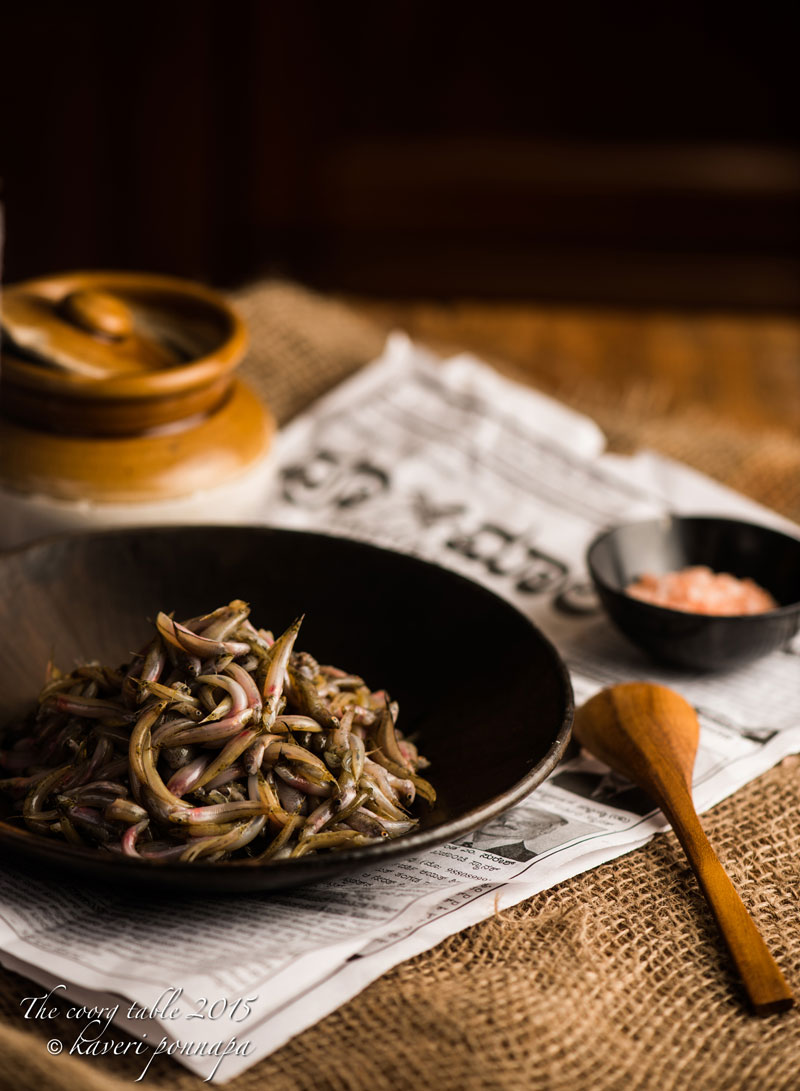 Never mind being barked at by a ferocious policewoman about parking restrictions on a very crowded street, there was no way we could leave before a long exchange of pleasantries and news about ourselves, our families and the world at large –it’s the way things are done in Coorg. Our conversation meandered around the changes we were seeing in our land, the dwindling rice fields and along with them, the disappearance of so many foods we once had in abundance. It was a welcome way to spend time. On my way out, I braved the policewoman’s wrath again, to stop by the bus stand, and pick up a copy of our favourite Coorg language weekly, the evocatively named Poomale, meaning a ‘garland of flowers’, that carries all the news you need about Coorg. With a copy tucked safely into the back pocket of a car seat, I headed home, my head full of stories, both old and new, dreaming of the curry and cutlets I would make with the fish.
Never mind being barked at by a ferocious policewoman about parking restrictions on a very crowded street, there was no way we could leave before a long exchange of pleasantries and news about ourselves, our families and the world at large –it’s the way things are done in Coorg. Our conversation meandered around the changes we were seeing in our land, the dwindling rice fields and along with them, the disappearance of so many foods we once had in abundance. It was a welcome way to spend time. On my way out, I braved the policewoman’s wrath again, to stop by the bus stand, and pick up a copy of our favourite Coorg language weekly, the evocatively named Poomale, meaning a ‘garland of flowers’, that carries all the news you need about Coorg. With a copy tucked safely into the back pocket of a car seat, I headed home, my head full of stories, both old and new, dreaming of the curry and cutlets I would make with the fish.  Koilemeen, the slender fish that is such a delicacy in Coorg thrives in freshwater streams that feed flooded paddy fields, an un-demarcated world that is neither land nor water. Here, carefully dammed and channeled cold, fresh streams rush along mud embankments to flood the fields full of growing paddy. It’s a beautiful world of upside down hills and skies reflected in standing water, pierced by sharp young stalks of ripening paddy. Snow-white cattle egrets tiptoe elegantly through on their long, thin legs, as though reluctant to disturb this submerged landscape.
Koilemeen, the slender fish that is such a delicacy in Coorg thrives in freshwater streams that feed flooded paddy fields, an un-demarcated world that is neither land nor water. Here, carefully dammed and channeled cold, fresh streams rush along mud embankments to flood the fields full of growing paddy. It’s a beautiful world of upside down hills and skies reflected in standing water, pierced by sharp young stalks of ripening paddy. Snow-white cattle egrets tiptoe elegantly through on their long, thin legs, as though reluctant to disturb this submerged landscape. 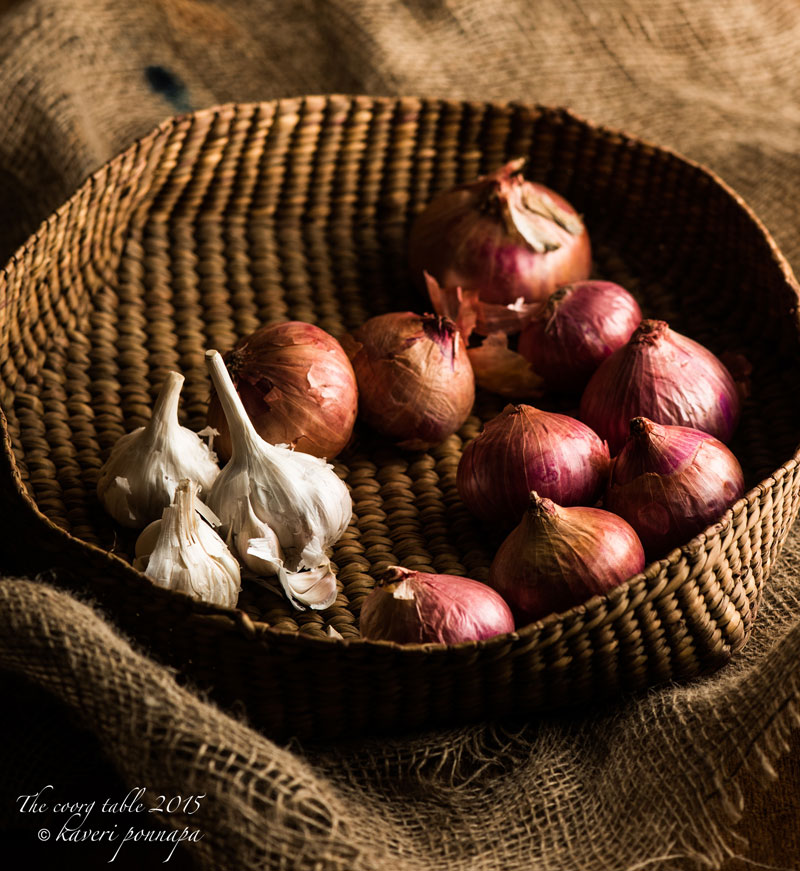 When the dammed waters rush into the rich fields, they bring with them a flood of small fish, tender and delicious. Growing up, the abundance of koilemeen in season was looked forward to and taken for granted. Large bowls of curry and crunchy, crispy cutlets were consumed, and bottles of pickle were put away for the months ahead. All this time of enjoying koilemeen, I hadn’t really paid too much attention to how they came to the table. It was enough that they were there. But gradually, the supplies waned; more often than not, we heard the same story everywhere –no koilemeen this year; or, they don’t seem to come in the way they used to, anymore. What had happened was something most of us hadn’t realized as we rushed ahead with our busy
When the dammed waters rush into the rich fields, they bring with them a flood of small fish, tender and delicious. Growing up, the abundance of koilemeen in season was looked forward to and taken for granted. Large bowls of curry and crunchy, crispy cutlets were consumed, and bottles of pickle were put away for the months ahead. All this time of enjoying koilemeen, I hadn’t really paid too much attention to how they came to the table. It was enough that they were there. But gradually, the supplies waned; more often than not, we heard the same story everywhere –no koilemeen this year; or, they don’t seem to come in the way they used to, anymore. What had happened was something most of us hadn’t realized as we rushed ahead with our busy 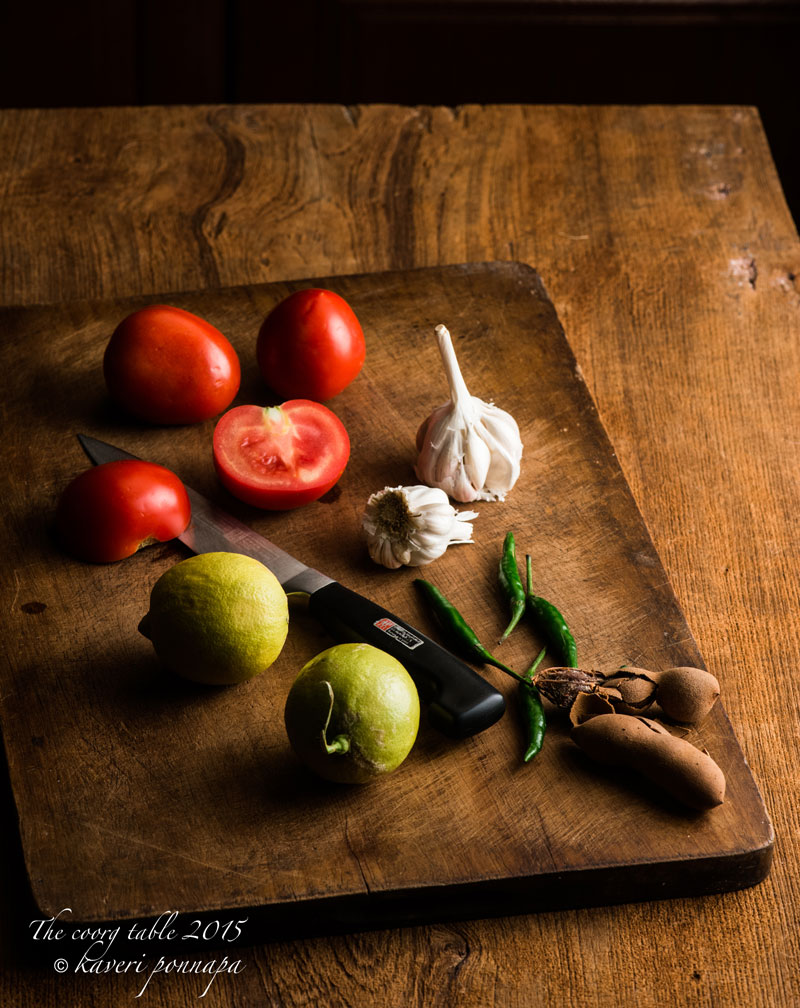 Every year, as we relinquished our rice fields to ginger and other crops, or just gave up cultivating them altogether, an entire eco-system changed. As the chemical fertilizers and pesticides increased, the fish retreated. Rice farming is also one of the most community oriented activities, and an unspoken understanding kept the natural water channels between neighbours clear of weeds and obstructions so that water flowed freely, a system that has shrunk alarmingly. The elaborate web of relationships that connected the flooded rice fields and the delicious fish that came to our table was forgotten. It was another little world, where traps (poda) were made from woven coconut or pana mara fronds and placed across the narrow breaches that channeled water into the fields, trapping the tiny fish. Bracken ferns, (thereme), with their tangled fronds, made a barrier that prevented the little fish from becoming soggy under the flow of water. The catches were abundant, quantities were consumed and even more dried on rooftops, saved for another day. The rich waters brought a first wave of chaipemeen, saved for drying, followed by the prized koilemeen.
Every year, as we relinquished our rice fields to ginger and other crops, or just gave up cultivating them altogether, an entire eco-system changed. As the chemical fertilizers and pesticides increased, the fish retreated. Rice farming is also one of the most community oriented activities, and an unspoken understanding kept the natural water channels between neighbours clear of weeds and obstructions so that water flowed freely, a system that has shrunk alarmingly. The elaborate web of relationships that connected the flooded rice fields and the delicious fish that came to our table was forgotten. It was another little world, where traps (poda) were made from woven coconut or pana mara fronds and placed across the narrow breaches that channeled water into the fields, trapping the tiny fish. Bracken ferns, (thereme), with their tangled fronds, made a barrier that prevented the little fish from becoming soggy under the flow of water. The catches were abundant, quantities were consumed and even more dried on rooftops, saved for another day. The rich waters brought a first wave of chaipemeen, saved for drying, followed by the prized koilemeen. 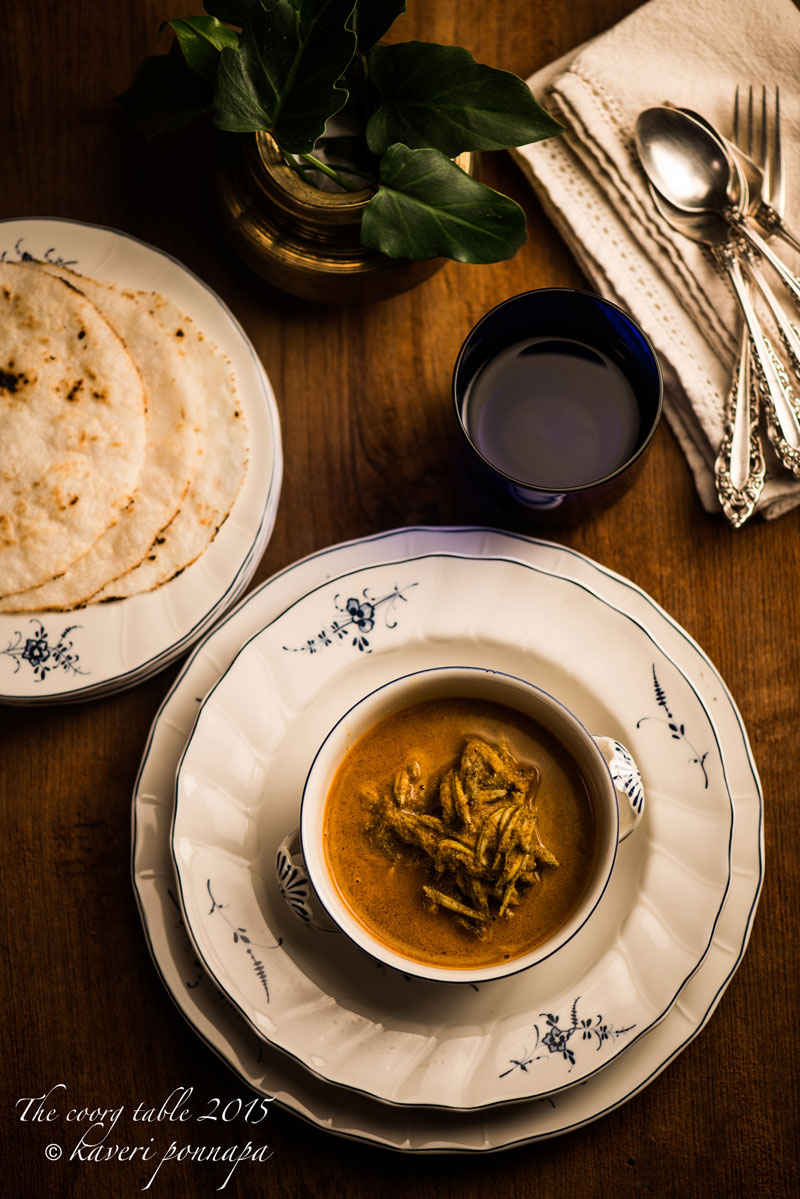
Every batch of koilemeen that comes into the kitchen brings other species of fish –stragglers and imposters who have to be caught and prevented from getting into your earthenware curry pot. Chaipemeen is rejected, as are some other odd characters. It’s a time consuming affair, cleaning the tiny fish from the dense mud of the fields. But it forges a deep connection with the land, a reminder of a particular confluence of soil, rain and water that produces this specialty that reaches our tables, year after year. This batch came after such a long while that I washed it with great care, retrieving every slippery little fish that escaped from my bowl.
The curry is rich and earthy, full of flavour. We always eat it with akki ottis, made from rice grown in those same fields, dreaming all the while of the brooding landscape of Coorg. Koilemeen curry evokes so much nostalgia and emotion tied to the land, it almost overwhelms. Small clusters of this fish bound with egg to make patties or cutlets come with a hidden crunch and a sharp touch of spice, a family favourite. The pickle is perhaps best of all, intense, salty and spicy.

The koilemeen season is officially at an end, although there may be another wave from villages that take a second crop of rice. Then we’ll have to wait long months for them to return to our kitchens. I hope there will always be enough rice fields in which they can thrive. I hope there will always be enough fish and that they will not become one of the ‘lost foods’ of the land. When the foods we love no longer come to our tables, we need to ask ourselves why –and be reminded that “what we eat is a part of an integrated whole, a web of relationships that cannot be reduced to single ingredients”. The food we eat is so much a part of who we are; a part of our history and of the choices we have made over the years from the landscape we lived in and what it had to offer. To keep the foods we love, perhaps we need to look at nurturing small farming communities. Without living rice fields, there will be no koilemeen, and perhaps many other things will begin to disappear, that we haven’t begun to miss as yet.
Image Credits: Nithin Sagi
All Food Styling: Kaveri Ponnapa
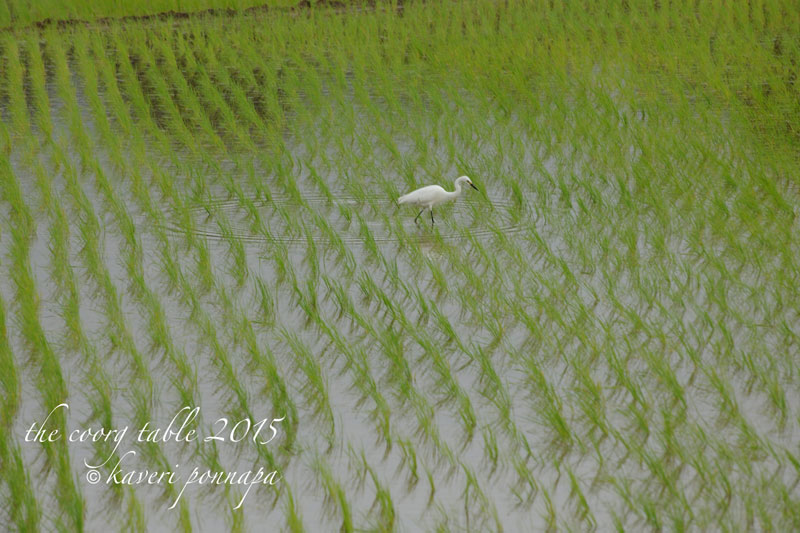
Image Credit above:Sudeep Gurtu
Thank you for visiting this page. If you read something that you enjoy, or see an image that you like, please take a moment to write a response. Do look out for the recipes of all the food featured here in my upcoming cookbook.

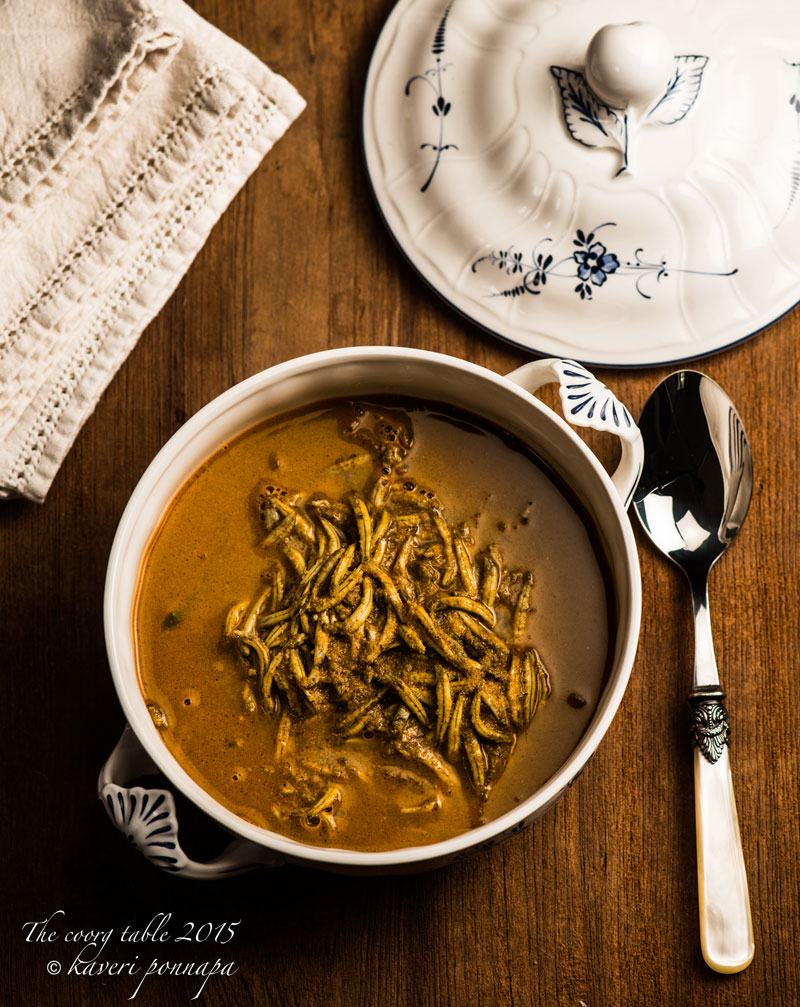
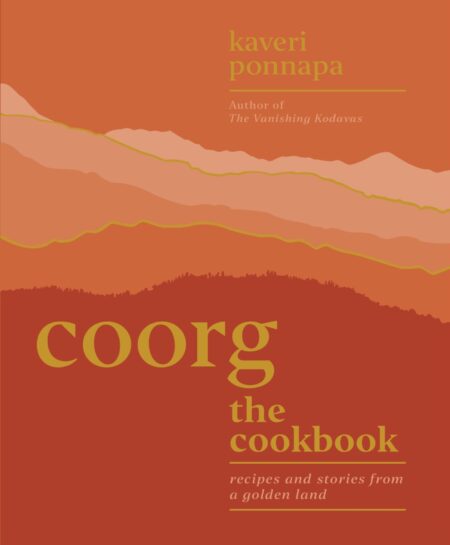


Hello!
I just walked back home from the fields and while browsing for a kumm curry recipe I stumbled on this post. Really good read. Definitely must reread the last paragraph. Thank you.
Hello Pooja, thank you for reading, and for your appreciation. I envy you that walk across the fields, I can imagine how refreshing it was, and how many little details you may have seen along the way – enjoy many, many more! Warm wishes. Kaveri
The old ways are gone forever. An easy and perennial source of inexpensive and punch-packed protein is lost in the flood of pesticides and other high growth techniques in all of the rice growing areas in India. I hope I can come to India before this species is also extinct. That was spectacularly mouth-watering ! Great presentation and write up. Loved it !
Thank you very much for your appreciation, Kishore, and I hope you get a chance to taste this curry. They are so delicious, and as you say, a generous by product of rice cultivation that added so much nutrition, variety and taste to our meals. These small, integrated eco systems are so valuable, its hard to believe that we could allow them to disappear.
What a beautiful post this is Kaveri. I have been a huge fan of your work for a very long time, I love the passion you have of the beautiful land of Coorg, it makes me want to catch the next flight and move there.
Hello Bhavna, welcome to The Coorg Table. How wonderful to hear that you have enjoyed this page for a long time. Thank you very much for writing, it makes a big difference to be able to connect with a reader. It also keeps me motivated to carry on posting. Coorg inspires me in so many different ways, and this is my attempt to showcase the wonderful cuisine and food traditions that we have, in the way that they deserve. Do keep reading, and writing in too. Warm wishes. Kaveri
Unfortunately the Koile keen I bought had more than 50% chaipe( bitter) fish, which is a herculean task to weed out. I remember, during my childhood days, my father used to discard all other fish except Koile meen from the Poda in the paddy fields. I was a vegan then. Now I long to eat it! It’s miniature lady (Kane) fish and the ultimate combination is with akki otti baked on charcoal cinders, not gas made!!
Thank you for writing in, Muthanna – most of the batches of koilemeen you get these days come with a quantity of chaipe meen. I don’t think people have the time to sort the catches as they once used to, and I guess it would be very difficult to check every individual batch. I agree entirely, it is a tedious task, and I too, spent ages sorting out the koile from the chaipe, but I felt the effort is worth it, because the curry at the end was so delicious. It’s a pity that you missed your opportunity to eat your fill during your vegan days, but never too late to make up,with a few charcoal toasted akki ottis! Best wishes, Kaveri
Very well composed article. ..Kavery….Kudos. .BZ. …
my mouth is watering as I read ….one of my favourite dishes not eaten in decades…..Last I had was 25 years ago when I bought few kilos of Koilemeen at a small shop at Gonikoppa on my way to Bangalore. …great fun to taste again !! Thanks. ..
Hello! I can imagine how much you must have missed eating koilemeen. In fact, the batch that features in the post was one that came to my kitchen after many years, and I made sure I used every last fish! I am very glad you enjoyed reading the article, thank you for taking the time to write, it’s always great to connect with readers. Do keep visiting The Coorg Table. Best wishes. Kaveri
Naada Mann Naada Koolu is doing wonderful job……Most of the Paddy fields are recovering back from nowhere to some where………So we can hope there will be living rice fields & koilemeen for the future also…We used to catch these koilemeen by Poda (made from bamboo sticks) and make them dry and eat by frying it with some onions, chillies (Just like papad) , being veg I don’t know how it tastes but I used to enjoy catching fish in streams, in fields WOW….It’s really great enjoyment, fun times which I had with my cousins….Thanks again for bringing back all the memories….Ahhhhhhhhh!!!!
Naada Mann Naada Koolu is a phrase so much about Coorg, and the way we all feel about the place. I never got to see the film of that name, though I heard all about it! Thank you for the additional koilemeen recipe, I have some dried koilemeen, and will certainly try out his combination. Do keep reading these pages. Warm wishes. Kaveri
Brilliantly written article! The dying paddy fields, and indiscriminate use of pesticides has changed our land forever.
Thank you very much, Apana. After speaking to many people in Coorg, I still feel we can revive our paddy fields and all that has been built up around them although it will involve a huge effort and a lot of determination. But when your entire culture is at stake, maybe we will find the energy and means to do it? Thank you for writing in,do keep visiting The Coorg Table, and your thoughts are welcome. Best wishes. Kaveri.